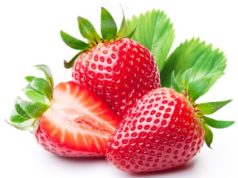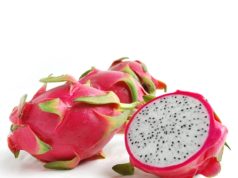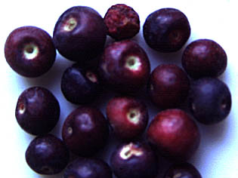How to Cultivate Mango for Effective Output
Mango (Mangifera indica L) is one of the choicest and most ancient fruits known to mankind. It occupies a pre-eminent place amongst the sub-tropical fruits grown in Jammu region and occupies an area of 10,661.89 hectares with annual yield of 12,064.22 metric tones (2009-10).
It is extensively grown in Jammu district and also in the sub-tropical areas of Jammu, Samba, Kathua, Rajouri, Udhampur and Reasi districts. However, in India, the total area under mango cultivation is 2.31 m ha with a production of 12.75 million tones.
How to Cultivate Mango: Appropriate Climate and Soil requirement
Mango thrives well up to 1400 m above mean sea level provided locality is frost free and there is no high humidity or rains during flowering.
The favourable temperature is 240C to 270C, however, it can tolerate temperature as high as 480C provided that trees are getting regular irrigation.
Mango has been found to grow on a wide range of soils. However, deep and well-drained loam to sandy loam soils are most suitable for mango cultivation.
Heavy black cotton, alkaline and water soils should be avoided. The ideal range of soil pH for mango cultivation is 5.5 to 7.5.
When we focus on how to cultivate mango we should also know about key Mango Cultivars
Bombay Green (Malda)
This is one of the earliest varieties of North India, harvested by the end of June. Fruits are medium sized having strong and pleasant flavour. Pulp is soft and sweet.
Dashehari
This is the mid season mango variety ripens in first half of July and most popular in North India. Fruits are medium sized with pleasant flavor, sweet and fibrous pulp. Its keeping quality is good.
Langra
This is also a mid season cultivar and ripens in 2nd half of July. Fruits are medium to large in size, flesh is firm, fiber less, lemon yellow and strongly flavoured. This is an important variety of North India.
Samar Bahisht Chausa
This is a late maturing variety of North India ripening in first fortnight of August. Fruits are large with light yellow colour with soft and sweet pulp. It is shy bearing.
Some of the important hybrids of mango are
1) Mallika, 2) Amarpali
Cultivar Amarpali is dwarf and preferred for high-density plantations.
[indeed-social-locker sm_list=’fb,tw,go1′ sm_template=’ism_template_1′ sm_list_align=’horizontal’ sm_display_counts=’false’ sm_display_full_name=’true’ locker_template=2 sm_d_text='<h2>This premium content is locked</h2><p>Share This Page To Unlock The Content!</p>’ ism_overlock=’default’ ]
Propagation and Rootstock
Rootstock used for grafting is grown from stones of seedling trees. The stones are sown soon after they are removed from the ripe fruit as they loose their viability very soon.
Before sowing, stones should be immersed in water and only those stones are sown which sink in water as these are considered to be viable.
The stones are sown in July-August in well-prepared beds. Stones are placed in the soil with the plumule up as it avoids dislocation of seedlings. The stones after sowing are covered with the mixture of sand and farmyard manure.
The seedling assumes graftable size in next July – August but some of the well cared seedlings become fit for grafting even in March-April.
Grafting methods
Mangoes can be propagated by several methods but it has been observed that veneer and side grafting are efficient as well as cheaper than inarching method.
The following points should be kept in view, while selecting and preparing scion wood for grafting.
(i) The scion sticks should have equal thickness to rootstock.
(ii) The scion sticks should be selected from terminal non-flowered shoot, which is of about 3 to 4 months of age.
(iii) The scion stick should be defoliated leaving a portion of petiole 7-10 days before their detachment from the mother plant.
Grafting time
Grafting can be done from March to April and from mid August to September.
Planting
The pits are dug during summer and filled with 20-25 kg well rotten farm-yard manure and garden soil. The distance of planting varies with cultivars. However, 8-10 m distance in both ways is advocated.
During planting, earth ball should remain intact and graft union should be above the ground level. The following points should be kept in view while selection of plant materials:
(i) Plants should be obtained from reliable nursery and should be of known pedigree.
(ii) The graft union should be smooth and above 25cm from ground level.
(iii) The plants should be vigorous and straight growing and free from various insect-pests/ diseases.
(iv) The plant should be taken out with good sized earth ball to keep maximum part of root system intact.
(v) The plant should be handled carefully during transit to keep the graft union as well as the earth ball in sound condition.
After care of young plants
(i) Provide irrigation to the newly planted young fruit plants. Avoid heavy watering and stagnation of water in their basins.
(ii) Remove / pinch off stock sprouts whenever they appear.
(iii) Remove tying material at the bud/ graft union, otherwise it may cause constriction.
(iv)Provide support to the plants for their upright growth.
Protection from frost and hot weather
The key element of how to cultivate mango is protect the young plants for at least 3-4 years against frost and low temperature injury by covering them with suitable thatching material. Irrigation can also be useful to ward off ill effects of frost.
Protection of plants/tree against hot weather by white washing the lower basal portion of stem is also desirable.
Other measures, like wrapping the stem/trunks of plants/trees with old gunny bags or providing thatches to young plants may also be carried out.
Training and Pruning
Training of the tree for well spaced branches is essential in early years. The main branches should grow in different directions at least 30cm apart and with good crotch angles.
As mango bears terminally, so annual pruning is not done except removing over crowding, diseased and dead branches.
Top-working of inferior mango trees
The old unproductive and inferior seedling trees which are found in large numbers everywhere, can be rejuvenated and improved by the process of top-working.
The selected scaffolds limbs of inferior or unproductive trees, desired to be top worked are headed back in Feb-March. The cut ends are treated with Bordeaux paste .
Many shoots emerge within a short time below the stubs. Out of these, 2-3 vigorous shoots per branch or limb are selected and remaining are removed. These shoots make fast growth and become suitable for grafting by August-Sept. of the same year.
Manuring and Fertilization
| Age in Year | F.Y.M.Kg/tree | Fertilizer requirement per tree (g) | ||
| Urea | Diammonium Phosphate | Muriate of Potash | ||
| 1. | 5 | 95 | 50 | 35 |
| 2. | 5 | 190 | 105 | 65 |
| 3. | 10 | 285 | 155 | 100 |
| 4. | 15 | 380 | 205 | 135 |
| 5. | 20 | 475 | 260 | 165 |
| 6. | 25 | 570 | 310 | 200 |
| 7. | 30 | 715 | 360 | 235 |
| 8. | 35 | 865 | 415 | 265 |
| 9. | 40 | 1010 | 465 | 300 |
| 10. | 45 | 1155 | 515 | 335 |
| 11. | 50 | 1305 | 570 | 365 |
| 12. | 60 | 1450 | 620 | 400 |
| 13. | 70 | 1600 | 670 | 435 |
| 14. | 80 | 1745 | 720 | 465 |
| 15th year and above | 100 | 1945 | 770 | 500 |
Note:-Apply full nitrogenous fertilizers along with half of phosphorous and half of potash first after harvesting of fruit. Remaining quantities of these two fertilizers should be applied during October with last irrigation. Apply at this time organic manure also, as they are released slowly.
Irrigation
The very first irrigation is needed just after planting in the absence of rains. Subsequent irrigations are needed as per need of the plantation upto 2-3 years or so. The interval between each irrigation may be of 3-4 days in summer to once a fortnight in winter depending upon type of soil and climatic conditions .
Bearing mango trees respond well to irrigation and they produce more yield by increasing fruit setting and fruit retention. Such trees should be irrigated at 10-15 days interval during the fruit development period.
Bearing trees should not be irrigated during flowering stage, rather it is advantageous to withhold irrigation that will induce more flowering otherwise it will result in more vegetative growth.
Interculture and Intercropping
Young mango orchards should be kept completely free of any weeds. At least one shallow cultivation at quarterly interval (once in 3 months) should be done. Bearing mango orchards are shallow cultivated in the beginning of the monsoon and again cleaned in post monsoon season.
In the interspace of the mango orchard, certain vegetables can be intercropped viz. onion, tomato, radish, carrot, cowpea, cluster bean, french bean, okra, cauliflower, cabbage, peas, colocasia, turmeric, methi and palak. Besides fruit crops can also be grown viz papaya, phalsa and strawberry for initial 4-5 years.
Harvesting and Yield
During first 3 –4 years, any flowering on trees should be removed to develop a good frame work of tree. It is common practice to harvest mango fruits when they start falling from the tree naturally (Tapka Stage).
Fruits should be harvested by using bamboo hand tool called mango picker.
The yield of the mango fruit varies due to several factors viz age of the tree, variety grown, climatic conditions, soil type, type of tree (Seedling or grafted one), on and off year and management practices followed.
However, from a well grown mango tree (10 year onwards) the yield varies from 40 to 100 kg and may go up to 3-5 quintals per tree at the age of 40 years.
Special problems
Fruit drop in mango
The natural fruit drop of mango is rather severe amounting to about 99% at various stages of growth. Regular irrigation during the fruit setting and development period can reduce fruit drop considerably.
Application of plant bioregulators like NAA (40ppm) or 2, 4-D ( 20 ppm ) about 6 weeks after fruit set, reduce fruit drop considerably.
Biennial bearing
This is one of the most burning problems since it renders mango cultivation less remunerative to the growers. Biennial bearing is also known as alternate bearing.
It indicates yield variations in alternate years i.e. an year of optimum or heavy fruiting followed by a year of little or no fruiting.
The problem of biennial bearing is a varietal character governed by genetic makeup, and this tendency starts exhibiting in mango plant even at the second year of fruiting and become more serious as the age advances.
Control measures:
i) Proper upkeep and after care of orchards, adequate manuring and proper irrigation after fruit set can help in reducing irregular/ erratic bearing in mango.
ii) Soil drenching with paclobutrazol (5-10g/tree) results in minimum out break of September to October flushes, which results in early and profuse flowering.
Physiological disorders
1. Black tip
The black tip disorder of mango fruits is a very serious problem in mango orchards located in the vicinity of brick kilns. The distal ends of the fruits turn black and spot gets hardened.
The affected fruits become ripe prematurely and have no market value. The varieties having more lenticels per fruit are more susceptible.
Control measures
(i) Shift the site of brick kilns two kms on east and west and one km on north and south of the orchard.
(ii) The operation of existing brick kilns should be avoided from February to May.
(iii) Increase the height of chimney of the brick kilns near the orchard to about 15-18 m.
(iv) Spray borax ( 0.6 %) before flowering, during flowering and at the fruit set stage or spray with 2% sodium carbonate at the marble-size fruit stage.
2. Leaf scorch
Mango leaves particularly old one show scorching at the tip and margins. Affected leaves fall down and the tree vigour and yield are reduced. The main cause of this malady is due to an excess of chloride ions which render potash unavailable.
Control measures
(i) Collect and destroy fallen leaves.
(ii) Apply potassium sulphate.
(iii) Avoid brackish water for irrigation.
3. Mango malformation
Mango malformation is of two types viz. vegetative and floral. The vegetative malformation generally affects seedlings of young plants in which there is a swelling of buds and formation of small shoots with short internodes at the apical portion and give an appearance of witches broom like structure.
In floral malformation, panicles become deformed, and axis become short and rachis thick , due to this inflorescence look like a cluster. Malformed panicles have bigger flowers than normal flowers and are mostly male.
Control: Following measures can lower the malformed panicles significantly:
1) Deblossoming once at bud burst stage
2) Single spray of 200 ppm NAA in October
Contributed By:
Dr. Parshant Bakshi
[/indeed-social-locker]








